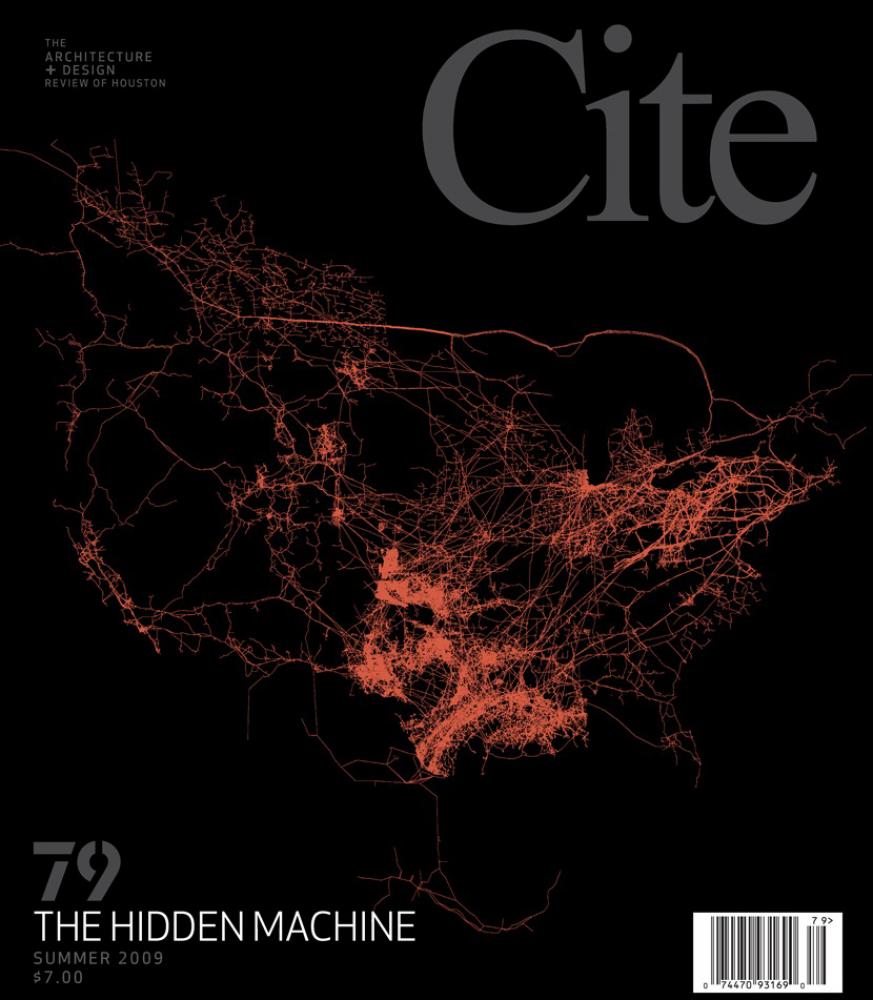Cite 79: The Hidden Machine
Summer 2009
Editor’s Note
One of the most extraordinary aspects of urban life today is the vast number of infrastructure systems and networks that are required to support our seemingly simple lifestyles, and the armies (sometimes literally) of people needed to maintain them.
These networks are like umbilical cords that keep us nourished, but they are so woven into the fabric of the city in such great numbers that the umbilical cord metaphor immediately breaks down. Weaving itself may provide a more realistic model for the way these floating, flowing, flying, rolling, buzzing, pressurized, and sometimes roaring networks make their way through the city. But in the case of Houston, the infrastructure that surrounds us suggests a rather threadbare carpet. From Katy to Baytown, the thick strands of these systems seem unattached to the city around them. In many places they dominate the neighborhoods that they run through. And some quite large precincts are places of infrastructure alone.
Maybe there is no adequate metaphor for the place of infrastructure in our lives. For that or some other reason, many of the enormous artifacts that surround us and that we are utterly dependent on usually go unnoticed, and apparently unconsidered, as a part of the experience and design of the city. We tuck our infrastructure behind buildings. We bury it. When possible, we push it into someone else’s neighborhood. Where it is visible, we have trained our eyes to not see it. As these systems have grown larger and more complex, they have become more and more automated, reducing even further the human connections to the machine.
This issue of Cite is devoted to making the infrastructure that surrounds us more visible and more accountable. What is the architecture of infrastructure? What does its appearance tell us about our attitudes of the city? What are the design implications of the startling adjacencies that are all around us? What are the trade-offs and investments needed to keep it going? As long as we continue to think of Houston as a collection of scenic neighborhoods and photogenic monuments while ignoring the networks that make these neighborhoods and buildings possible, we will continue to blind ourselves to an important part of the complex reality that is Houston.


